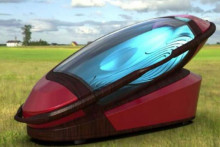Stem cells are no doubt a disruptive technology with great potential. But are we overlooking any dangers? Does the public truly understand what this technology is capable of, and how it can change society? We talked with two students: Stefano Coco, a Master student of Biomedical Engineering who is conducting research within the department of Applied Stem Cell Technologies, and Jan Reineke, a Master student of Philosophy of Science, Technology and Society, with a particular interest in debates around human enhancement technologies and regenerative medicine.
What is the ultimate goal of using stem cell technologies? Is it to ‘fix everything’ so humans can live forever?
Coco: ‘My interest in stem-cells is related to regeneration of tissue in case of organ failure, or tissue engineering applications, like being able to repair bone defects after trauma. I am supportive of using stem cells for anti-ageing in the sense you solve a pathology using cells instead of implanting metals or polymers such as a pacemaker.’
Reineke: ‘When people hear anti-ageing they usually think of living forever. A much more nuanced idea is that of making the human body able to be healthy for longer: when something fails or breaks you can always replace it with stem cells and make yourself healthy again.’
Can we sustain a population that lives for extremely long periods of time?
Coco: ‘I can’t see stem cells enabling people to live extremely extended periods of time in the near future, not even in the next hundred years. I don’t know if that’s an urgent ethical problem being discussed at the moment. My opinion would be, of course, that it’s not feasible for everyone to live forever.’
Reineke: ‘As we are nowhere near that being a reality, this makes the political issue of how resources would be distributed if people lived for 200 years much less pressing. But, it raises other questions: What are the steps to take to eventually get there, and who is taking them? Who is driving these developments? Most of this research is being done in the wealthier nations. Perhaps eventually some people can indeed live forever or very long. Who will these people be? We will end up with a class of wealthy long-living elite?’
Maybe people focus too much on stem cell applications for anti-aging purposes. What about tackling specific diseases? Is there conflict between these different applications, in terms of vying for resources?
Coco: ‘I see no conflict at all, research is going in all directions possible. Once there is an understanding of the biology of stem cells and we have full control over them, then you can use it for any application you want. However, we should talk in more detail about what is actually feasible with them, because there is a lot of hype and unrealistic expectations.’
Does this hype about the technology change people’s perception of how the technology actually works?
Reineke: ‘I would not say that we need less hype, because hype can be good, it gets people interested and engaged. But what we need is more in-depth understanding of the technology. There are a lot of researchers who know what they’re talking about, but there are also a lot of futurists that get excited by new technologies and are more gullible to the hype. They read one paper and then think they know everything about it, whereas they only have a basic understanding.’
Coco: ‘I remember a year ago, there was an article about using spinach leaves with cardiac cells claiming that using spinach leaves you could have a new heart. That’s obviously not realistic. But I understand the need to make a headline for non-research articles. What’s bad is to build false expectations, and while hype itself isn’t necessarily bad, it often pushes these unrealistic ideas forward.’
But aren’t stem cells radically and disruptively different than current medical practices? Or is it just a continuation of a long history of medicine?
Coco: ‘They certainly are radical and disruptive, because of their potential to fix a vast range of problems.’
Reineke: ‘They’re disruptive also because they can change the way we approach medicine: it can go from being simply reactive, treating symptoms, to being proactive, intervening before the problem or illness has a chance to develop.’
If they really are disruptive, perhaps all the hype can be partly justified. What about the fears of resistance groups, like bioconservatives, who think we should not be meddling with the natural course of things? Are they justified?
Reineke: ‘You can exaggerate on both ends of the spectrum. There can be too much hype, or you can also be too afraid of things that will realistically not even happen. And in between lie the legitimate concerns, which should of course be discussed to inform our practices.’
Coco: ‘There’s a common misconception that scientists want to play god. In reality, we are just trying to find solutions to problems like everyone else.’







